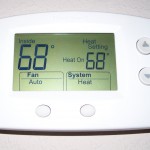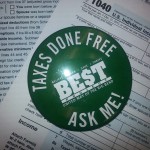by Heidi Copeland | Mar 3, 2014

Handle food safely and stay informed about food recalls.
Have you paid attention to any of the recent food recalls? In February 2014, both the U.S. Food and Drug Administration (FDA) and the U. S. Department of Agriculture (USDA) issued consumer food recalls and alerts for a variety of food safety reasons. Product recalls warned consumers about undeclared allergens, false or misleading labeling, pathogenic contamination, and unsanitary processing conditions, to name only a few of the reasons.
A safe food supply is important to everyone! Both the USDA and the FDA have responsibility for protecting different segments of the food supply however; there are other food safety agencies involved. Consumers play an important part in keeping food safe. In addition, to handling food safely, consumers need to be aware of food recalls. Watch for food recall notices in the news, at your local grocery store, and online at www.recalls.gov. If identifying marks on the food product you have purchased match the detailed information in the recall notices, then you can do the following:
- Return the product to the place of purchase for a refund. OR Dispose of the product following the instructions provided in the recall notice to assure it will not be consumed by anyone.
- Do not eat the product.
- Dispose of the product carefully.
- Do not give the product to others (do not give to food bank, your pet, for example).
- Do not puncture or otherwise open cans.
- Wash hands with warm water and soap for at least 20 seconds after handling the product.
The Bottom Line is… if you sense there’s a problem with any food product, don’t consume it. “When in doubt, throw it out!”
Share this educational information with family, friends, and neighbors. Stay informed, stay safe; check for product recalls.
View the following UF/IFAS Extension publications for more information about food regulation”
http://edis.ifas.ufl.edu/pdffiles/FS/FS12100.pdf
http://edis.ifas.ufl.edu/pdffiles/FS/FS11800.pdf

by Angela Hinkle | Mar 2, 2014

Enjoy the taste of eating right.
Taste tops nutrition as the main reason why we buy one food over another, as consumer research has clearly shown. Even though social, emotional, and health factors do have important roles to play, the foods people enjoy are probably the ones they eat the most. The key message for National Nutrition Month® – March 2014 focuses on encouraging personalized healthy eating styles – showing how we can combine taste and nutrition to make healthy meals.
This year, the Academy of Nutrition and Dietetics encourages everyone to “Enjoy the Taste of Eating Right”. Because taste is the major influencer of what we eat, it’s important to balance choosing the foods we like with those that provide the nutrients we need.
When it comes to choosing what to eat, nutrition is important, but flavor is the true motivator and the key to eating right. We have over 10,000 taste buds, so we should use them to discover a world of tasty nutritious foods.
- Try one new fruit, vegetable, or whole grain each week.
- When eating out, try ethnic foods from Asia, Europe, or Africa because they often have many healthy options.
- When cooking at home, try a new twist on old favorites. Grill vegetables and fish, make kabobs, bake the potatoes instead of mashing them, and use that spice rack to add zest.
- If you’re sticking with the tried and true foods you know you like, be sure to read the nutrition labels to help you develop a plan for healthy eating that emphasizes a balance of foods.
Return to the basics of healthful eating starting this month. Enjoy the Taste of Eating Right: eat right, your way, every day.
Learn more about how you can enjoy the taste of eating right by visiting www.eatright.org and by contacting your local UF/IFAS Extension Office.
by Kristin Jackson | Feb 28, 2014
Normal
0
false
false
false
EN-US
X-NONE
X-NONE
/* Style Definitions */
table.MsoNormalTable
{mso-style-name:”Table Normal”;
mso-tstyle-rowband-size:0;
mso-tstyle-colband-size:0;
mso-style-noshow:yes;
mso-style-priority:99;
mso-style-parent:””;
mso-padding-alt:0in 5.4pt 0in 5.4pt;
mso-para-margin-top:0in;
mso-para-margin-right:0in;
mso-para-margin-bottom:8.0pt;
mso-para-margin-left:0in;
line-height:107%;
mso-pagination:widow-orphan;
font-size:11.0pt;
font-family:”Calibri”,”sans-serif”;
mso-ascii-font-family:Calibri;
mso-ascii-theme-font:minor-latin;
mso-hansi-font-family:Calibri;
mso-hansi-theme-font:minor-latin;}
 Are you “liquid asset poor?” If a household experiences an unexpected financial strain, such as a job loss, illness, or other large expense, and does not have enough liquid assets to cover basic expenses for three months, they are considered liquid asset poor. Liquid assets consist of money held in checking or savings accounts. According to recent research conducted by the Corporation for Enterprise Development, approximately 49% of Floridians are considered liquid asset poor.
Are you “liquid asset poor?” If a household experiences an unexpected financial strain, such as a job loss, illness, or other large expense, and does not have enough liquid assets to cover basic expenses for three months, they are considered liquid asset poor. Liquid assets consist of money held in checking or savings accounts. According to recent research conducted by the Corporation for Enterprise Development, approximately 49% of Floridians are considered liquid asset poor.
Emergency funds focus on increasing liquid assets though savings. An emergency fund can allow households to adapt when unexpected financial strains occur. In the past, three to six months of income was considered to be a good emergency fund. In more recent times, the economy and unemployment have caused households to need much larger emergency funds. University of Florida professor, Dr. Michael Gutter, in “Money and Marriage: Saving for Future Use,” encourages families to consider the following factors:
- How much protection is provided by insurance
- Number of household incomes
- Household needs and fixed obligations
- Family financial support
- Retirement proximity
- Age of children
- Available credit
You can get an estimate of your household’s liquidity by completing the following steps:
1) Calculate the total amount of cash you have on hand and in your checking/savings accounts.
2) Develop a spending plan to allow you to estimate your monthly expenses.
(For help with developing a spending plan, check out Building a Spending Plan)
3) Enter your total cash and monthly expenses into the household liquidity formula:
Total Cash ÷ Monthly Expenses= Household Basic Liquidity
If the household basic liquidity is equal to or less than 1, this would be interpreted as having enough liquid resources to sustain your household’s current spending for only a month or less. If the household basic liquidity ratio is greater than one, that number is the number of months you would be able to live on your liquid assets based on your current spending. If you are not at your desired or expected number, take the pledge to start saving today at America Save$!
References:
Corporation for Enterprise Development. (2014). “Liquid Asset Poverty Rate”
Gutter, M. (2011). “Money and Marriage: Saving for Future Use”
Turner, J. (2001). “Show Me The Money: Lesson 5: Savings and Investments”

by Angela Hinkle | Feb 28, 2014

Family Eats Sofa
No, not the kind you sit on. SoFAS stands for “Solid Fats and Added Sugars”. Even though the Dietary Guidelines for Americans recommends no more than about 15% of daily calories should come from SoFAS, Americans of both sexes and all ages get closer to 35% of their daily calories from SoFAS – nearly 800 calories a day. This isn’t a big surprise when considering the top food sources of SoFAS: pies, cakes, cookies, donuts; fruit, energy, and sports drinks; pizza; ice cream; and sausages, hot dogs, bacon, and ribs. Each of these foods adds about 100-150 calories on average to the daily American diet.
Solid Fats are saturated or trans-fats that are solid at room temperature. Added sugars are in foods that have sugar added to them during processing or preparation. SoFAS also are known as “empty calories.” Many people eat those empty calories in place of nutrient-rich foods their bodies need. SoFAS provide little or no nutritional value and they can have serious implications on health, including heart disease, weight gain, and tooth decay.
Nutrient dense foods provide key nutrients for the calories consumed. These nutrients build, repair, and maintain body tissues, regulate body processes, and give the body fuel for an active lifestyle. Nutrient-rich food choices fill you up so there is little room left for the empty calories from SoFAS that offer few nutrients the body can use. Pick foods rich in vitamins, minerals, dietary fiber, lean protein, and healthy fats from all the food groups before eating foods with SoFAS.
To see how many empty calories are in some favorite foods, check out How Do I Count Empty Calories? You can calculate your exact calorie needs on the ChooseMyPlate Super Tracker site. Don’t want to count calories but want to be sure not to eat too many empty calories? Read the Nutrition Facts Label on food packages and choose foods that are lower in fat and have less total sugar.
Eat a variety of healthy foods from each MyPlate food group every day. And get off the SoFAS – avoid the solid fats and added sugars.
For more information about SoFAS, contact your local UF/IFAS Extension Office.
by Judy Corbus | Jan 27, 2014

Set your thermostat to 68 degrees or lower in the winter to reduce heating costs.
Winter definitely is here! Thankfully, we are not shoveling snow here in the Panhandle like our neighbors to the north, but our electric bills most likely have risen as the mercury has dropped. To save money on your winter heating bill, follow these tips:
- Set thermostats no higher than 68ºF when people are home.
- Lower the thermostat when you sleep or are away from home. The Energy.gov website states that if the setback period is 8 hours or longer, savings of as much as 1% for every degree setback can be achieved.
- Put on a sweater or warmer clothing for comfort and lower the thermostat even more. Layer clothing. Closed or tighter cuffs and collars help to retain body heat. An extra blanket or throw will keep you toasty with a lower thermostat setting.
- Use ceiling fans to circulate heated air. Most fans have a switch that allows users to adjust the direction of the fan blade movement. Set fans to move in a CLOCKWISE direction in winter. The upward air flow will move stagnant hot air off the ceiling area and down into the living space. This allows for a lower temperature setting on your heating unit without a reduction in the comfort level.
- To ensure the heat gets to where it is supposed to go, use mastic or foil-faced tape to seal the seams and any cracks in air handling ducts.
- Have the heating system serviced each year to ensure efficient operation.
- Check caulking and weather stripping around doors and windows. Replace as needed to reduce heat loss.
- Clean or replace heating system filters. Dirty filters reduce the efficiency of the heating system and waste valuable fuel. Check filters monthly and clean or replace as directed by the manufacturer.
- Do not place furniture and curtains over or around the heat registers or in front of cold air returns. These items will block the airflow.
- Never use the stove for additional heat. It is dangerous. Besides causing a fire hazard, fumes given off by combustion from gas appliances can result in increased carbon monoxide levels.
- On sunny days, open blinds, shades, and curtains, especially if your windows face south. At sunset, close the blinds, shades, and curtains to help keep heat in your home. This really makes a difference.
For more household energy saving tips, visit the UF/IFAS Energy Efficient Homes series.
Source: No to Low Cost Actions to Save Home Energy and Money
by Kristin Jackson | Jan 22, 2014

The Voluntary Income Tax Assistance (VITA) program offers free tax preparation to qualifying taxpayers.
Tax season starts officially on January 31, 2014. Now is time to start gathering documents and deciding on a tax preparer. For low to moderate income individuals and families, the VITA (Voluntary Income Tax Assistance) program maybe an option. Generally, VITA offers free tax help to people making less than $52,000.
When taxpayers use VITA everyone wins! The Federal government saves money due to increases in electronic filings and reduced filing errors. Local economies benefit when taxpayers receive their entire refund to spend in the communities where they live and work. Thanks to the help of Internal Revenue Service (IRS) trained and certified volunteers, qualified taxpayers save money on tax return preparation fees by receiving free high quality tax preparation service with access to e-file and direct deposit.
Volunteers will prepare:
- Form 982, Cancelation of Debt***
- Form 1040EZ, 1040A, 1040
- Schedules A,B,D***,C-EZ,EIC,R, SE
- Schedule E, Supplemental Income and Loss***
- Schedule C, Profit or Loss from a Business***
- Form 1040-V Balance Due Returns
- Form 1040 –ES Estimated Tax Payments
- Form 2016, Employee Business Expenses***
- Form 2441 Child and Dependent Care Credit
- Form 3903 Moving Expenses
- Form 5329 Additional Taxes on Qualified Plans and Other Tax-Favored Accounts (part 1)
- Form 5405, First Time Homebuyers
- Form 8863 Education Credits
- Form 8880 Credit for Qualified Retirement Savings Contributions
- Additional Child Tax Credit
- Form 8888 Allocation of Refund
- Form 88889 Health Savings Accounts***
- Form 8949 Sales and Other Dispositions of Capital Assets
- Form 1040-X Amended Returns***
***These services are limited and depending on the scope of the request may require the assistance of a paid preparer.
For assistance finding a VITA site near you contact your local UF/IFAS Extension Office http://solutionsforyourlife.ufl.edu/map/
or United Way (dial 211 or visit www.211.org).








